HPE Intelligent Data Platforms And InfoSight Predictive Analytics: 9 Things To Know
HPE is preparing for a hybrid cloud world by finding new ways to take advantage of the intelligence that can be gleaned from all that data on-premises and cloud infrastructures provide by analyzing it and making recommendations via its Intelligent Data Platform.
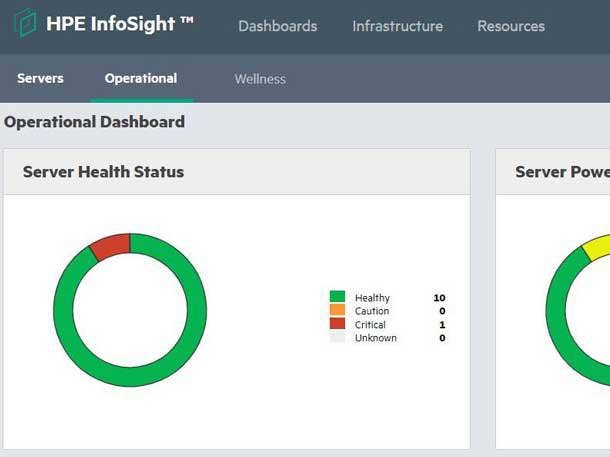
Bringing Intelligence To Data
While the introduction of flash technology has led to a massing increase in storage performance over earlier disk-based systems, and the cloud has shown how to add agility and simplicity to storage infrastructures, the IT industry's coming adoption of artificial intelligence to help predict and prevent potential issues will be the real game changer in IT infrastructure, said Sandeep Singh, vice president of marketing for HPE storage.
The addition of artificial intelligence to data management will not only help ensure data remains available, but will also help customers unlock more value from that data, Singh told CRN. "AI enables unlocking of insights from data to drive a better customer experience, uncover new business models, new revenue streams to deliver a competitive advantage," he said.
This will give rise to the intelligent enterprise, Singh said.
"The intelligent enterprise is always on, and always fast," he said. "Every business nowadays is 24x7x365. And applications that are powering that business need to be always available, and always fast. Businesses require agility, and they need to be always agile. Developers are absolutely requiring that level of agility. And the enterprise needs to be built across the board for that agility of cloud."

Why Does Intelligent Data Really Matter?
Singh identified four areas where making data intelligent quickly adds to a business' top line and bottom line.
The first is infrastructure management, which is key to IT resiliency, he said. Citing IDC statistics, Singh said over 90 percent of IT issues come from above the storage layer, but where taking understanding data from hundreds of variables across the entire stack to help predict issues. "That can require hundreds of thousands or millions of calculations to then be able to predict and prevent the issues," he said. "And that is a problem that is far too complex for humans to solve."
The second is the ability to use hybrid clouds to unlock agility across all clouds, Singh said. Dependence on a single cloud provider leads to vendor lock-in and potentially not being able to take advantage of other clouds' innovations. However, IT organizations have different silos for mission critical operations, secondary operations, general purpose operations, dev/test, and more. "When you expand that to a hybrid cloud, that complexity multiplies exponentially," he said.
The third is data management from primary to secondary to backup and to archive across multiple copies of data made for test, analytics, and so on, Singh said. Managing all that data, or even knowing how many copies of the data exits, becomes a challenge at scale," he said.
The fourth is extracting value from the massive storm of data being generated by edge devices, as well as from data sensors in every part of the business, Singh said. "There's valuable insights that are hidden there that can drive a competitive advantage," he said.
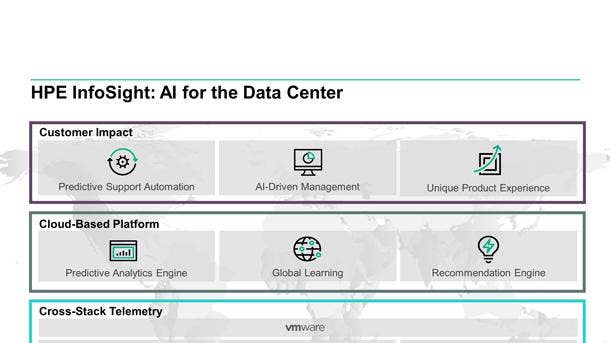
HPE Intelligent Data Platform
HPE's strategy for delivering intelligence is its Intelligent Data Platform which uses artificial intelligence to build workload-optimized systems, Singh said. The Intelligent Data Platform provides three cloud data services:
-- InfoSight, a SaaS-based cloud service.
-- HPE Cloud Volumes, a block data service.
-- HPE Cloud Bank Storage, which allows data protection that combines on-premises infrastructure for fast recovery and cloud for long-term retention in the public cloud.
These services enable such HPE applications as Recovery Manager Central which provides application-aware data protection that can be integrated with mission-critical applications for complete copy data management, Singh said. This can be combined with secondary platforms as an on-premises target for rapid recovery on-premises, or with Cloud Bank Storage for long-term backup and archive on the cloud, with integration with AWS S3 or Glacier, or Azure. It can also be combined with HPE Cloud Volumes for a complete disaster recovery solution. Data can be backed up to Cloud Bank Storage, but can choose to recover it to HPE Cloud Volumes in the cloud for disaster recovery or test/dev, he said.
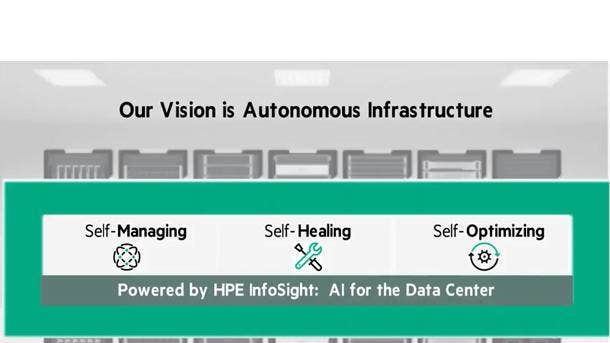
Intelligent Data Platform And HPE InfoSight
The Intelligent Data Platform is key to predicting and preventing issues before they occur via HPE InfoSight, a predictive analytics technology which helps ensure an infrastructure is always on and is self-healing, Singh said. "It shifts from a reactive support model to a pro-active support model," he said.
Other capabilities include workload fingerprint technology that can detect and characterize the I/O profile of the various deployed application workloads, Singh said. "When we combine that with global learning, where we have over 100,000 systems that are calling home, it truly spans across the storage portfolio attached all the way up to the server layer and beyond and hooked into the virtual machine layer," he said. "That enables us to deliver powerful and prescriptive recommendations not only for the storage administrator but also for the virtual machine administrators."
The Intelligent Data Platform works with nearly all types of containers, allowing them to spin up and down in seconds. It also allows AI and machine learning pipelines to be stitched together in minutes to enable a variety of big data and analytics applications, Singh said.

Looking Forward: The Intelligent Data Platform
While the Intelligent Data Platform uses HPE InfoSight to predict issues and suggest possible mitigations, any actions taken on those recommendations are still handled manually, but that will change as more automation is added, Singh said.
"That is where we are headed in the future, to enable that full machine-to-machine-enabled optimization," he said. "Today, we don't just give the data. We analyze all of that data through the AI and machine learning models. We then have very prescriptive insights to say, 'Here's an action you can take, to move it from here to there, or add this amount of cache, or add a new system with these characteristics.' That's going way beyond anything else that exists. In the future, based on that intelligence, we'll be able to actually have machine-to-machine action to take action on that."
HPE also plans to enable SaaS-based data management with context-awareness and seamless data life cycle management based on data mobility on intelligence.
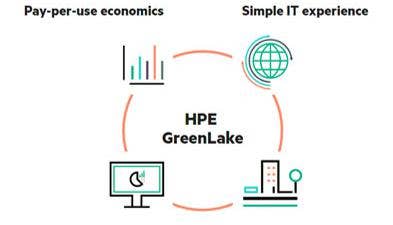
New: Extending Multi-Cloud Capabilities With Google Anthos, HPE GreenLake
HPE is extending its partnership with Google Cloud's Anthos platform to enable a true hybrid cloud.
Stateful applications with data persistence running across on-premises and cloud infrastructures require application and data mobility with consistent data services, Singh said. With Google Cloud's Anthos platform, which is billed as a container managed service, customers get the application workload mobility, with management provided by Google Service Mesh, he said. The relationship with Google is important because of Google's advanced ability to managed containerized applications which are key to data mobility, Singh said.
Starting in the third quarter of this year, HPE also plans to make its Nimble storage technology combined with HPE Cloud Volumes a foundation for data mobility and consistent data services, Singh said. With the Google relationship, Cloud Volumes will attach Google, AWS, and Azure compute to provide true multi-cloud flexibility, he said.
HPE in the second half of 2019 also plans to offer its HPE GreenLake consumption-based IT model to provide end-to-end delivery of as-a-service capabilities that combine both the on-premises and cloud-based parts of such services, he said.
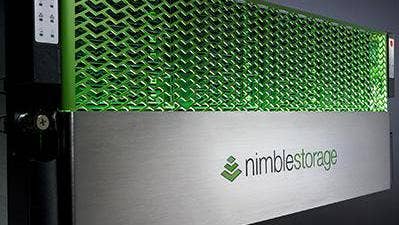
HPE InfoSight: Predictive Analytics The Base Of The Intelligent Data Platform
HPE's Intelligent Data Platform cannot work without the data needed to make recommendations, and HPE InfoSight, with its predictive analytics, is where that data comes from.
InfoSight is the IT industry's most advanced artificial intelligence for infrastructure, said David Wang, director of marketing for HPE storage. It was developed in 2010 by Nimble Storage, and since HPE's 2017 acquisition of Nimble Storage InfoSight has been extended across HPE server, its 3Par storage, and its HPE SimpliVity hyper-converged infrastructure technologies.
HPE builds thousands of physical and software-based sensors into its systems to give InfoSight the data needed to analyze and recommend changes to IT infrastructures at the system, sub-system, and surrounding systems levels, all the way from the storage to the virtual machines, Wang said.
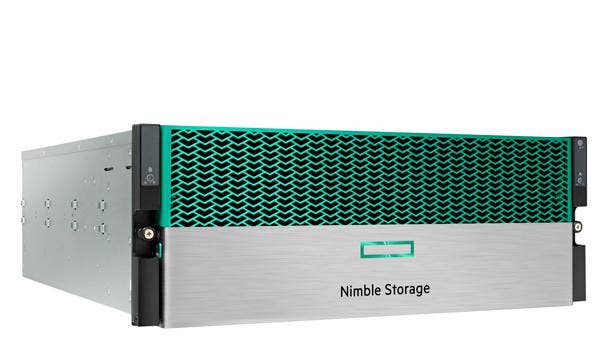
InfoSight By The Numbers
The InfoSight code base is built with about 2,000 signatures which detect certain fault points, said Omer Asad, general manager for HPE 3Par and HPE Nimble storage. There are about 40,000 Nimble systems and 85,000 3Par systems deployed in the field which are sending a total of 80,000 to 90,000 data points in a five-minutes interval back to HPE's 5-petabyte big data lake.
To date, HPE has used InfoSight to analyze over 1,250 trillion data points across its entire installed data base of Nimble and 3Par systems, Wang said. "And what that's meant for customers with all the analysis and problem preventions and recommendations is, we've saved 1.5 million hours of lost productivity," he said.
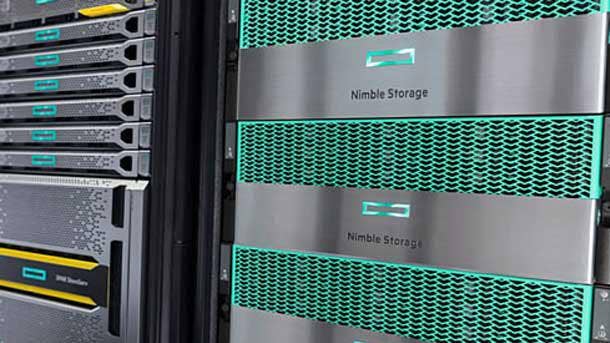
Coming to InfoSight: The "Fix-It" Button
In 2014, Nimble Storage saw five nines, or 99.999 percent, measured availability across its entire installed base going back to the first arrays shipped back in 2010, Wang said. In 2017, with thousands more systems feeding data to InfoSight, a study of the installed base saw a 10-times jump in availability to 99.9999 percent for Nimble storage. "[That's] a 10-X improvement, where systems are aging but are actually getting better," he said.
The kind of recommendations that enable available to actually grow as systems age is powerful, leading HPE to add a "Fix-It" button, as it is currently known, to InfoSight. The "Fix-It" button is actually a command executed from the cloud to automate changes, such as moving a virtual machine or application, or resizing volumes, Wang said. "That's the ultimate step for us from an autonomous standpoint," he said.'
The "Fix-It" button means that action to mitigate potential issues is still done manually, either locally by the customer or partner or remotely by the HPE support team, Singh said.